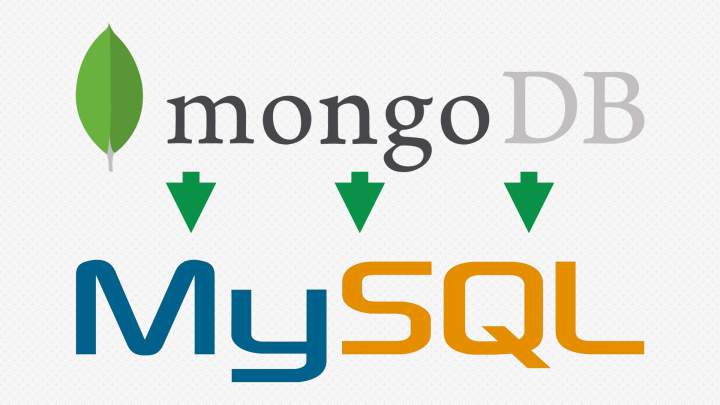What Is the Difference Between MySQL and MongoDB
One of the most important parts of implementing an application or website is choosing the database. There are many databases that programmers use according to system needs and preferences, and in this article, we are going to look at two popular databases. In this article, we take a look at the differences between MySQL and MongoDB.
What is a database?
First, let’s talk a little bit about the concept of a database. Imagine filling in the phone book based on people’s names, numbers, and other information. This phonebook is a database that contains entered information, and you can use it based on letters or numbers when needed.
In software systems, a large amount of information needs to be stored so that, if necessary, it is accessible and in a variety of ways. A database has tables that store information in its rows and columns that meet defined standards. The structure of data storage varies in databases.
Relational Databases
There are many types of databases, the most famous of which are relational databases and NoSQL databases. Stores data in relational databases in a table, and the data refers to the rows and columns of the table.
The standard SQL (Structured Query Language) is for controlling and accessing data in relational databases. For this reason, they are also SQL databases. In this database, tables, rows, columns, primary key, external key, index, etc., are used to work with the data.
NoSQL Database
NoSQL, which stands for Not Only SQL Database, is a type of databases that work on a larger scale than SQL databases and deal with different data models such as key-value, graphical data, document-based, and so on. These databases work with large collections of distributed data.
What is a MySQL Database?
MySQL is one of the most popular relational SQL database management systems. It is open source and is used to build many web applications. An RDBMS can help you with the following:
- Implement your relational database with the necessary rows and columns and the corresponding list.
- Integrate rows of different tables.
- Access and collect database data via SQL statements.
MySQL is powerful and fast, and is suitable for large projects to work with large data sets. This system is suitable for any operating system and supports many languages, such as PHP and Java.
What is the MongoDB Database?
MongoDB is one of the most popular NoSQL databases, with a flexible structure, and is used in projects with high data volumes. This database is an open-source and free platform that works with the Document (Oriented) data model, and it is available on Windows, Mac, and Linux.
The data is stored in the relevant documents in BSON format, which is similar to JSON but supports more data. These values are used with two primary keys (Primary Key) and a Secondary key (Secondary Key). For more information about this database, you can read the article What is MongoDB.
What is the difference between MySQL and MongoDB?
Now that we have an overview of both databases, let’s look at the differences between MySQL and MongoDB.
MySQL has a 20-year history and has been used in many NASA projects, military projects, and companies such as YouTube and Netflix. MongoDB has been around for about 10 years and has been used in major projects such as Twitter and Sony.
In MySQL, the data structure is in the form of a table, and SQL commands are for accessing the data. But in MongoDB, the data is in the form of documents that can have different types of data, and these values can be accessed with the key. It is actually a type of data storage (Key-Value).
If no data index is found, MySQL will automatically search the entire table to find the corresponding index. In Mongo Debbie, all documents in a collection are searched to find documents related to the requested data.
Community: This system is very extensive and accessible. MongoDB, on the other hand, has fewer Q&A forums because it has less history than MySQL.
MySQL is a great option if you want to use relational databases. But systems already built on these databases are not easily transferable to the MongoDB database. On the other hand, Mongo Debbie can be a good option in cases such as content management and mobile applications.
Mongo Debbie has no tabular structure and is a kind of schema-free. For this reason, adding new structures or features does not affect other structures. While in MySQL, to add a new column, the whole database is scanned, and there may be problems.
Conclusion
Each of these databases has its own characteristics and applications. We looked at the differences between MySQL and MongoDB and found that relational databases seemed appropriate to support older systems and multi-line processing. On the other hand, the flexible structure of MongoDB will allow you to store all kinds of data that may be needed to implement the project.
FAQ
What is MySQL and how does it store data?
MySQL is a relational database management system that uses structured tables (rows and columns) with a predefined schema and supports SQL queries.
What is MongoDB and how is it different in storing data?
MongoDB is a NoSQL, document-oriented database that stores data as flexible JSON-like documents (BSON) in collections, allowing schema variations and unstructured or semi-structured data.
When should I choose MySQL versus MongoDB for my project?
Choose MySQL when you have well-defined, relational data, require strong ACID transactions and structured schema (e.g., financial systems). Choose MongoDB when you need flexibility in schema, handle large and evolving datasets, or need horizontal scalability (e.g., realtime analytics, content management).
